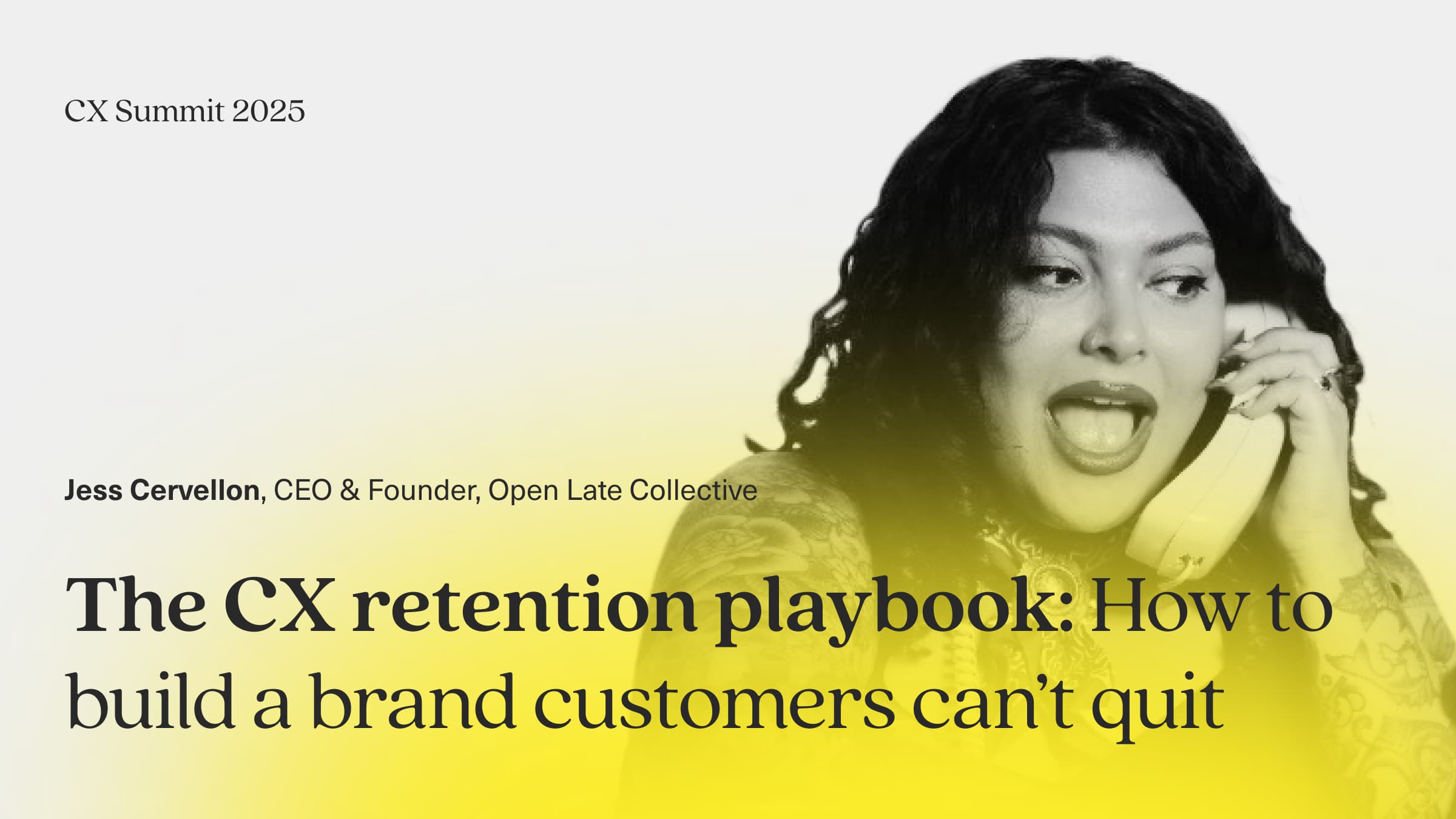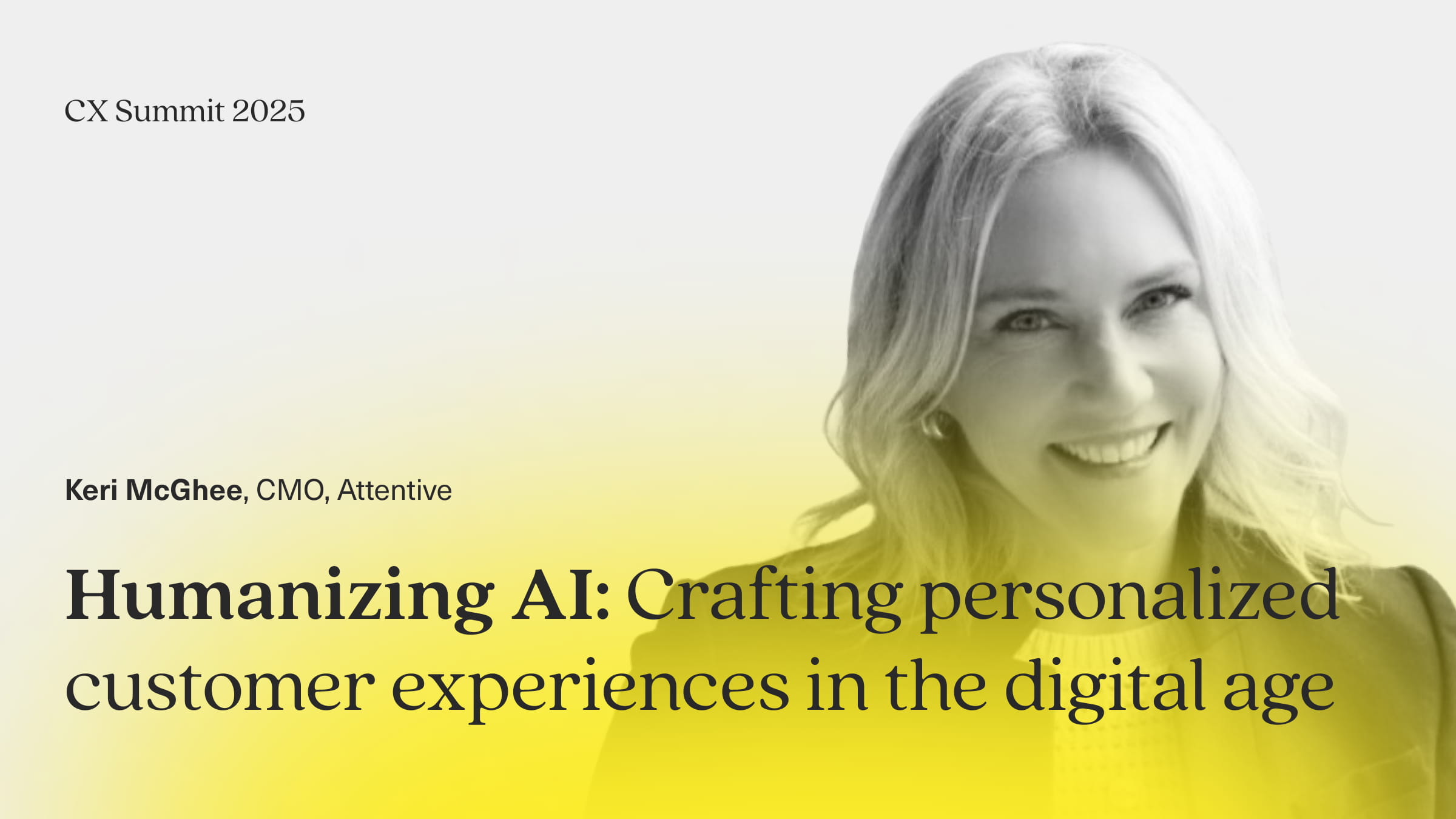Jess Cervellon is the founder and CEO of Open Late Collective, where she leads fractional CX and retention strategy. Open Late Collective helps brands grow by improving their customer experience, retention tactics, and sometimes even their brand strategy.
During the CX Summit, she chatted about improving retention by building a brand that customers can’t quit. Let’s get her expert tips now!
This interview has been edited for clarity.
Gabe Larsen: You’ve found a sweet spot where support becomes a growth engine, not just a cost center. How did that come about?
Jess Cervellon: If you look at ecommerce historically, there’s been so much focus—and spend—on acquisition. Brands throw money at ads to get customers in the door, but they don’t spend enough time nurturing them after that. People assume retention just means email and SMS, but it’s about the entire customer journey.
Retention starts the moment a customer engages with your brand, not after their first purchase. CX is key here. It’s not just about solving tickets; it’s about improving repeat purchase rates, reducing churn, and using customer feedback to influence every part of the business.
Gabe Larsen: Totally. Once someone’s in the funnel, we often forget about nurturing them. You’re known for your work in retention—what’s a common myth you see brands still buying into?
Jess Cervellon: The biggest myth is that retention equals email and SMS. I see job postings for “Head of Retention,” and their only responsibility is managing those two channels. But retention is about the entire customer experience. It starts with your first ad. What message are you setting? Does it align with the actual product experience? Every touchpoint matters, and that’s where true retention strategy lives.
Gabe Larsen: That’s a great point. I also see brands defaulting to price drops to keep customers. But what’s actually more powerful than price when it comes to retention?
Jess Cervellon: Building real relationships. Price can bring in customers, but it often attracts the wrong ones. Relationships, on the other hand, drive long-term loyalty. Think about how friendships work—you personalize conversations, pay attention to behaviors, and build trust. Brands should aim for that same two-way relationship with their customers.
Gabe Larsen: Amen. Let’s talk personalization. Not every brand has a ton of data. How do you recommend brands start personalizing when they’re still early in the journey?
Jess Cervellon: Personalization isn’t just using first names or AI. Start with your brand strategy—who are you speaking to, and what behaviors are you targeting? Segment customers based on what they click on or what products they explore. One brand I work with sells skincare for different concerns like crepey skin or dehydration. They use click behavior to create segmented experiences. It’s simple, but effective. You likely already have the data, you just need to use it smartly.
Gabe Larsen: Love that—start with what you have. Switching gears a bit, you mentioned email and SMS. What’s one thing brands are doing wrong in those post-purchase flows, and what should they be doing instead?
Jess Cervellon: One brand I worked with had a 50-email welcome flow—just wild. And customers who had already purchased were only getting one or two emails. That’s backward. You need two different journeys: one for buyers, one for non-buyers. Educate new customers, upsell where it makes sense, and build a relationship. Also—clean your list. If someone hasn’t purchased in six months, don’t keep hitting them with the same messages. Segment them differently or move them into a reactivation campaign.
Gabe Larsen: Yeah, the idea of treating everyone the same is a fast track to losing people. Okay, let’s talk budgets. When money is tight, where should brands start if they want to improve CX or retention?
Jess Cervellon: I see brands pouring everything into paid growth but ignoring CX until it’s too late. If you don’t have a big team or budget, start by tagging CX conversations. Categorize every ticket. That data becomes gold. It helps you understand churn, product issues, and opportunities to improve. It also gives you a leg to stand on when asking for more investment later. You’re not guessing - you have real insights to support your case.
Gabe Larsen: That’s such a great, scrappy place to start. Last one for you: what are you watching in the world of CX and retention right now? What trends or shifts should people be paying attention to?
Jess Cervellon: The biggest one is helping CX teams move beyond being seen as a cost center. If you’re a CX leader, start tracking how your team contributes to repeat purchases or impacts churn. Build the case that your work drives revenue.
That shift is crucial right now. If you want to secure budget or grow your team, you have to show that CX isn’t just a support function, it’s a growth driver.
Gabe Larsen: Love that. Especially in tighter times, showing ROI is key. Jess, thank you for the insights, the fun, and the truth bombs. Always appreciate your perspective.
Closing thoughts
Jess shows us that customer experience leaders must rethink CX as more than support: it’s a strategic growth driver. Retention starts with the first touchpoint, not after purchase, and thrives on personalization, relationship-building, and thoughtful segmentation. Instead of relying on discounts, brands should focus on understanding customer behavior and using CX insights to improve the entire journey. Even with tight budgets, tagging support interactions and tracking impact on churn and repeat purchases can turn CX into a data-backed, revenue-generating powerhouse.
Looking to supercharge your brand’s customer support? Check out our guide on consolidating your CX tech stack or explore Kustomer today!




